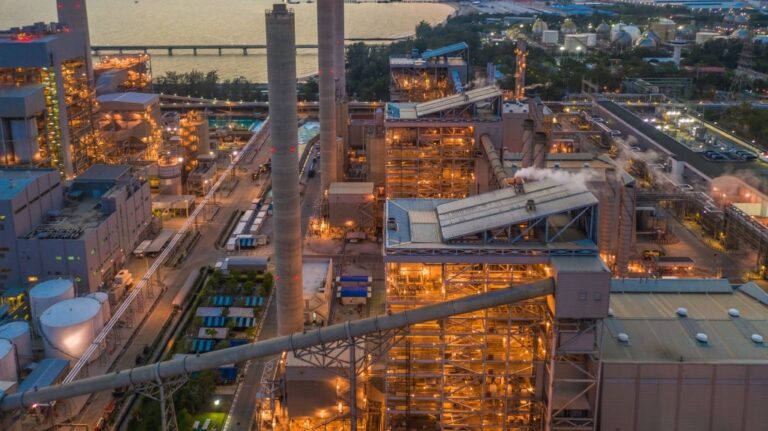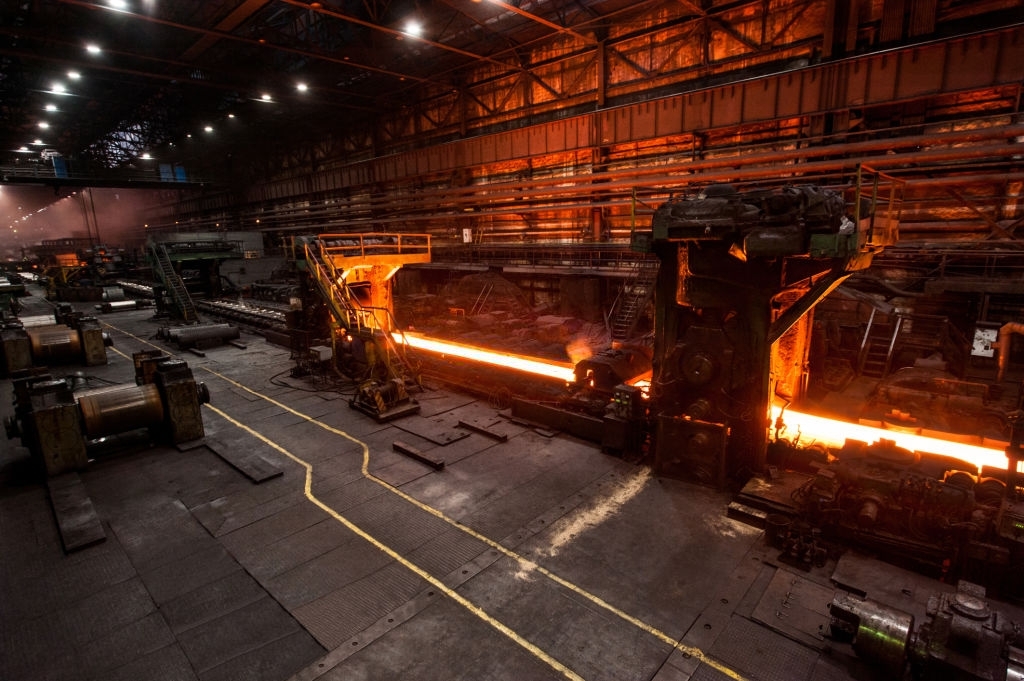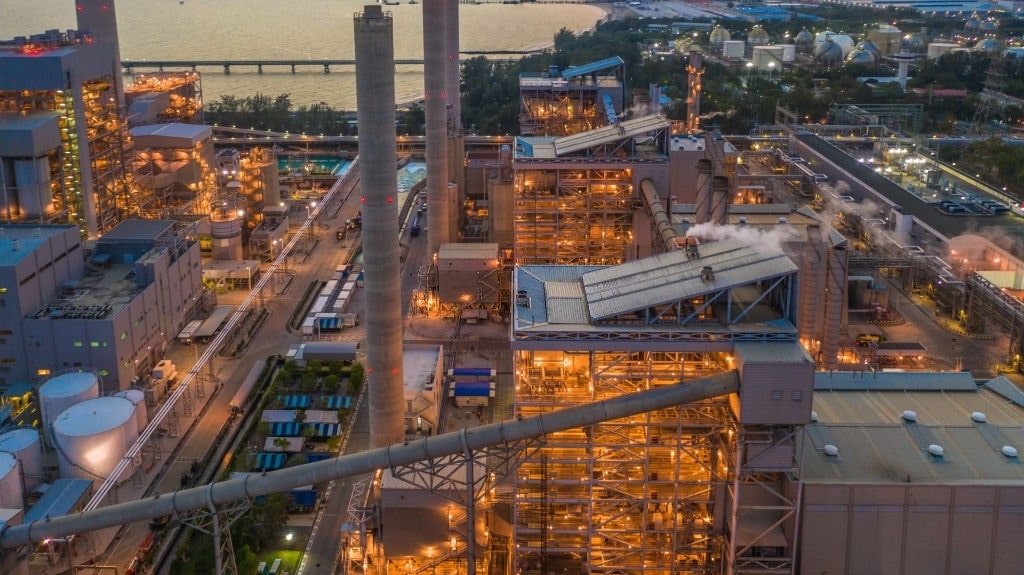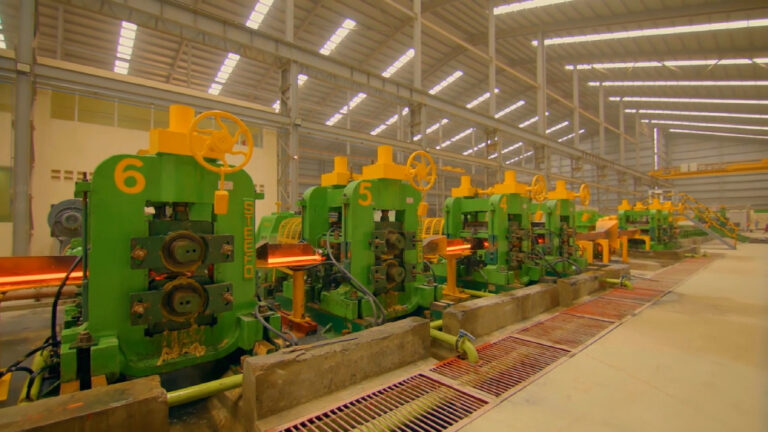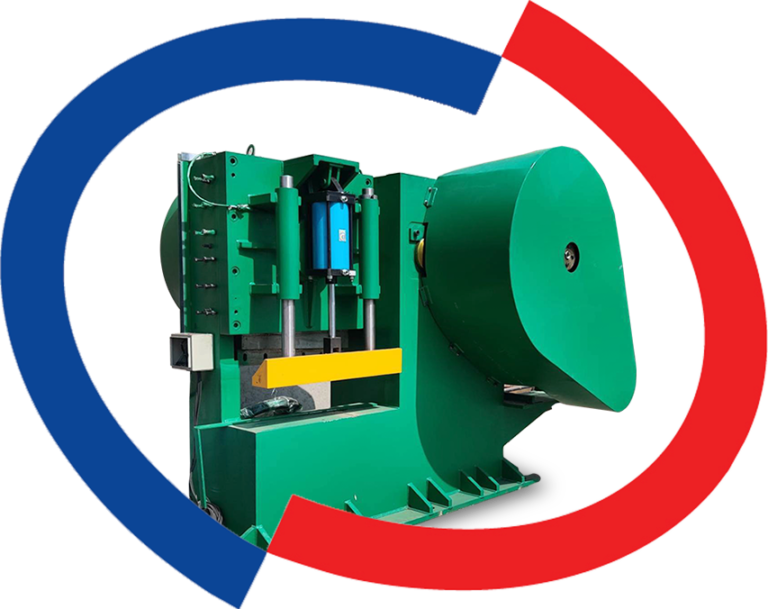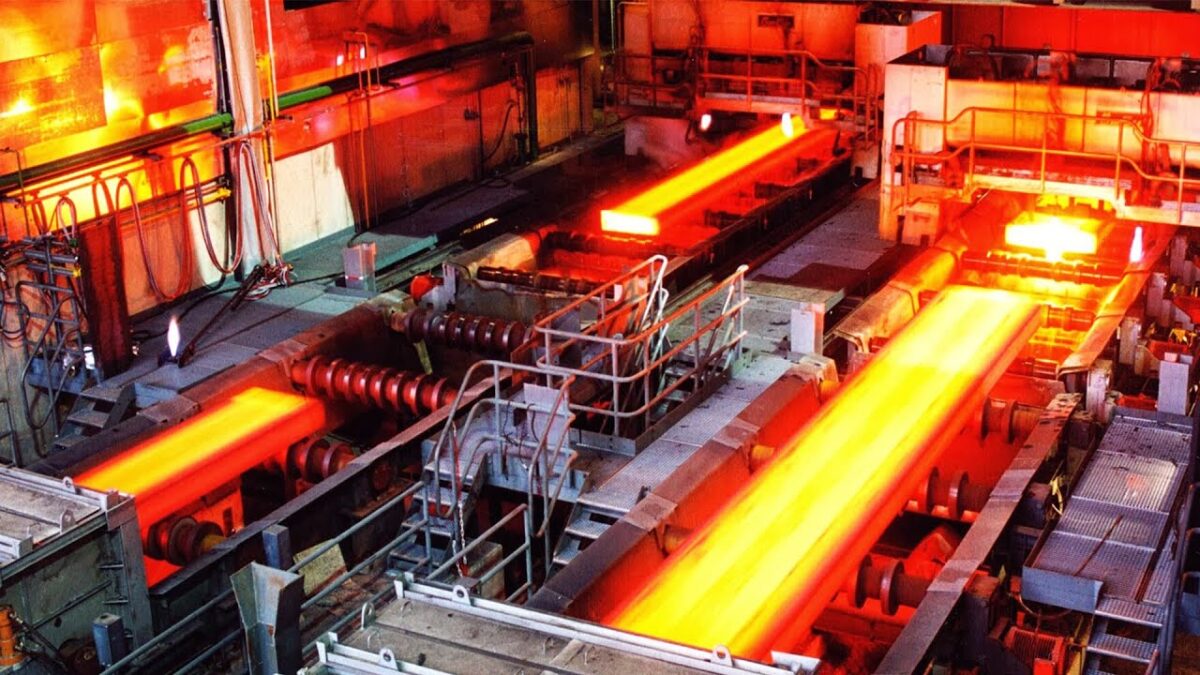When you’re planning or upgrading a steel plant, one of the most strategic decisions you’ll face is whether to go with a greenfield or a brownfield route , particularly when implementing rolling mill machinery and full‐scope turnkey solutions. In this post, we’ll examine how this choice plays out in the context of a hot rolling mill, weighing the pros and cons of each, clarifying what “turnkey solutions” really mean, and helping you decide which approach makes sense for your business.
What Do We Mean By “Turnkey Solutions”?
In the world of steel plant machinery and rolling mills, a turnkey solution refers to a project delivery model in which a provider supplies the entire package from beginning to end — concept, engineering, procurement, construction, commissioning, and handover of the fully operational plant. The owner can “turn the key” and go into production. For example, the Steefo Group offers turnkey solutions in rolling mill projects from concept to commissioning.
Key features of a rolling mill turnkey solution include:
- Full design of the layout, process flows, utilities and supporting infrastructure for your steel plant machinery.
- Supply of the major machinery – reheating furnaces, rolling stands, cooling beds, automation and control systems, and material handling.
- Project management, civil works, erection, testing, commissioning and start‑up services.
- Integration of the rolling mills with upstream and downstream equipment (eg, billet reheating, finishing, packaging) for an integrated solution, not just stand‐alone machines.
- Service and support post‑commissioning, spare parts, and operator training.
Managing a project under the turnkey model shifts much of the risk (schedule, integration, quality) to the supplier partner, which is a major advantage in complex heavy equipment landscapes such as steel plants.
For steel plant owners looking to establish or expand rolling capacity, the decision between a greenfield vs a brownfield project under a turnkey contract is a pivotal one. Let’s look at both approaches in depth.
Greenfield and Brownfield in the Context of Rolling Mills
Greenfield
A greenfield rolling mill project means you are starting essentially from scratch. You pick a site (often undeveloped land), build all necessary structures, install brand‑new plant machinery (including utilities, foundations, infrastructure), design your layout without many constraints from legacy systems, and launch a completely new production line or facility.
The greenfield approach gives you full flexibility on technology selection, layout optimisation, future expansion, and (in many cases) better alignment with modern sustainability standards. For example, greenfield projects allow building plants designed around new energy‑efficient or low‑emission technologies.
Brownfield
A brownfield project for a rolling mill entails upgrading, expanding, or re-purposing an existing facility or site. You may have existing rolling equipment, foundations, utilities, structural layout, or infrastructure. The aim is to add new rolling mill lines, upgrade existing stands, increase capacity, or improve efficiency. Because you are working with existing assets or sites, constraints such as space, layout, and downtime become more important. The benefit is potentially lower upfront investment and shorter time to production.
In steel plant terminology, a brownfield upgrade might mean adding a new hot rolling mill line adjacent to an existing one, retrofitting the control system of existing stands, or re‐modelling the layout to accommodate new products or higher speed. The key is “existing assets + upgrade” rather than “all new”.
Why the Choice Matters for Your Rolling Mill Turnkey Solution
When opting for a turnkey solution for your rolling mill, whether you choose greenfield or brownfield will affect many key dimensions of your project, including:
- Capital expenditure (CAPEX) and operating expenditure (OPEX)
- Lead time to production
- Flexibility in design, product mix and future expansion
- Integration of new technology (automation, smart controls, Industry 4.0)
- Risk profile (construction, commissioning, downtime)
- Sustainability and regulatory compliance
Let’s compare greenfield vs brownfield across these dimensions specifically for rolling mills.
1. CAPEX, OPEX and Investment Structure
Greenfield: Starting from scratch typically involves high upfront investment. You’re acquiring land (if needed), building foundations, utilities (power, water, gas, air), roads, logistic links, and installing brand‑new plant machinery. According to industry commentary, greenfield steel plants represent high CAPEX for integrated facilities. However, once set up, you have an optimised layout and fewer constraints from legacy assets, which may reduce long‑term operational costs and improve efficiency.
Brownfield: Since you use some existing infrastructure and assets, the CAPEX is often lower (or at least partially amortised). Time to cash‐flow may be faster because you tap into existing production lines or facilities. But hidden costs may arise , for example, retrofitting old utilities, interruptions to production, removal of old equipment, or aligning old layouts with new rolling mill machinery. Many brownfield projects, therefore, carry the risk of cost overruns if legacy issues are not carefully managed.
For rolling mill turnkey solutions, the supplier must assess not just the new equipment cost but integration cost, disposal/repurposing costs of old equipment, alignment of existing utilities, and potential downtime costs.
2. Lead Time to Market
Greenfield: The timeline from break‐ground to production is typically longer. You must complete site development, infrastructure installation, full civil works, machinery supply and erection. Industry reports indicate greenfield plants can span 5‑7 years in large integrated steel works. For rolling mills specifically, that means longer waiting before you see revenue from that milling line.
Brownfield: Because you are leveraging an existing site, the time can be shorter. Installation, retrofit and commissioning may be done faster if the layout is well understood and downtime is managed. But the challenge is to carry out upgrades while the plant is live (if you keep production running). So careful planning and phasing are required.
If you are focused on rapid capacity expansion for rolling mill lines in a steel plant, a brownfield turnkey solution may make more sense.
3. Design Flexibility & Product Mix
Greenfield: Maximum flexibility. You can design the rolling mill layout, select the newest technology (stands, automation, cooling beds), integrate utilities optimally, plan future expansion paths, incorporate automation from day one, and align with sustainability goals. For example, you can pick the latest hot rolling stand technology, advanced cooling, modern control systems and a layout that supports optimal billet flow to finished bars or sections.
Brownfield: You are constrained by existing building structures, utility capacities, foundations, layout of previous equipment, and possibly limited space. Upgrading means working around or replacing legacy systems. The new rolling mill machinery must integrate with existing upstream and downstream equipment, often limiting full flexibility. Some optimal flows may be compromised. Also, future expansion may be harder if the site footprint is already used or there are space constraints.
4. Technology Integration and Sustainability
Greenfield: You can design a rolling mill line with the latest machinery, with builtin automation and digital controls, advanced cooling systems, energy recovery systems, environmental controls and sustainable utilities (e.g., waste heat recovery, automation that reduces scrap and reheat losses). The freedom to choose the best‑in‑class equipment means your steel plant machinery for rolling mills can be state‑of‑the‑art.
Brownfield: You may face more difficulty integrating cutting‑edge technology without major disruption or cost. Legacy equipment may limit speed, flexibility or energy efficiency. Integrating new automation into older control systems or retrofitting new stands may carry complexity. That said, many turnkey solution providers have experience with brownfield upgrades and manage this well.
5. Risk Profile and Project Execution
Greenfield: Risks include land acquisition issues, long lead time, infrastructure build‑up, regulatory clearances, environmental permits, construction risk, and commissioning delays. The “all-new” nature increases uncertainty. For large steel plants, this risk is substantial.
Brownfield: Risks include disruption to existing production (if you keep it running), unknown condition of existing assets (foundation fatigue, utility wear, hidden constraints), complexity of integration, and managing the interface between new and old systems. But the familiarity of the existing site may reduce some uncertainties.
For a turnkey rolling mill project, selecting an experienced partner is critical: they must manage design, procurement, erection, commissioning, and interface issues (whether new or existing).
6. Scalability and Future Expansion
Greenfield: Because you begin fresh, you can design expansion‑friendly layouts, plan spare infrastructure capacity for future lines, choose large footprints and ancillary utilities sized for growth. If you anticipate growth of your rolling mills (volume increase, new product mix, value‐added sections), a greenfield project gives headroom.
Brownfield: Expansion is often more challenging because you may run out of space, existing utilities may be near their limit, or the layout may not support easy addition. In some cases, you may need to purchase adjacent land or face complex civil/structural modifications.
How to Decide: Is a Greenfield or Brownfield Turnkey Solution Right for You?
Here are key factors to evaluate when choosing between greenfield and brownfield for your rolling mill project:
A. Current Capacity and Market Demand
If your existing steel plant is at or near capacity and demand is growing rapidly for rolling mill output (e.g., TMT bars, merchant bars, sections), then a brownfield expansion may provide faster relief. If you are establishing a new plant or entering a new market, greenfield might make better sense.
B. Site Availability and Infrastructure
Do you already have a site with utilities (power, water, gas/coal, logistics, rail sidings) and existing rolling mill machinery? Then, Brownfield may leverage that. If you don’t have a suitable site or you want to choose ideal land for layout, logistic connectivity, and future growth, then greenfield is attractive. In India, factors like power availability, land acquisition, environmental clearance, water, and rail/road access are crucial.
C. Project Budget and Internal Resources
What CAPEX can you commit? Do you want lower upfront investment and faster pay‑back (favouring brownfield) or are you targeting a high‑end, future‑proof facility with higher CAPEX but lower operational cost (greenfield)? Assess your financing, expected return on investment, OPEX savings, and timeline.
D. Technology Ambition and Product Mix
If your rolling mill project aims to incorporate the newest stands, highest automation, digital controls, varied product mix (bars, wire rods, sections, value-added products), and you plan for future upgrades, greenfield may be better. If you are upgrading an existing line and your product mix is stable, a brownfield upgrade by a turnkey solution provider may suffice.
E. Time‑to‑Market
If you need to increase capacity quickly, a brownfield may offer shorter lead times. If you can afford the longer lead time and want a more customised, flexible setup, greenfield is viable.
F. Operational Continuity and Risk Management
If you cannot afford major downtime (e.g., you must keep production running during expansion), brownfield allows staging and phased installation. Greenfield, by default, avoids interference with existing operations but takes longer. Also consider regulatory, environmental, and logistical risks.
G. Future Expansion and Growth Outlook
If your business expects significant growth and you want a facility that can expand easily, choose a site and design that allows future rolling mill lines, spare utilities, and product diversification. That typically aligns with greenfield.
H. Sustainability, Compliance and Modernisation
If you aim to incorporate the latest environmental standards, energy-efficient machinery, digitalisation and smart manufacturing for your rolling mills, then a greenfield facility gives you fewer constraints. Brownfield can still achieve this, but may carry additional cost or compromise due to legacy layouts/utilities.
Practical Considerations for Rolling Mill Turnkey Solutions in India
Here are some local considerations:
- Land acquisition in India: Site selection must factor in power, water, connectivity, labour availability, and government incentives. Indian firms looking at greenfield or brownfield sites must pay attention to infrastructure readiness.
- Compliance and environmental clearances: Rolling mill plants and steel plants are subject to heavy environmental regulatory oversight. Greenfield builds may face more initial permits, but brownfield retrofits may face constraints in upgrading older facilities to new standards.
- Logistic costs: For rolling mills, moving billets, slabs or ingots, and finished coils/bars require good transport (rail, road). Site choice matters.
- Technology sourcing: For rolling mills, you’ll need reliable suppliers for stands, cooling beds, automation, drives etc. Ensuring spare parts availability and service is critical.
- Turnkey solution partner credibility: Selecting a partner with strong project delivery and experience in both greenfield and brownfield rolling mill projects reduces risk.
Specific Rolling Mill Machinery and Turnkey Considerations
When you are implementing rolling mill lines as part of your turnkey project (greenfield or brownfield), there are certain machinery and system considerations you want to review:
Key machinery in a hot rolling mill plant:
- Reheating furnace (for billets/slabs)
- Descaler and billet handling equipment
- Roughing mill stands and finishing mill stands (housing‑less stands, multi‑row bearings)
- Cooling beds (moving apron type, rotary twin channel, etc.)
- Finishing equipment (cut‑to‑length, coiling, bundling)
- Automation and control systems (PLC/SCADA, drives, sensors)
- Utilities and services (power transformers, air compressors, hydraulic systems, lubrication)
- Material handling (conveyors, cranes, feeders, skip hoists)
- Quality‑control systems (non‑destructive testing, dimensional measurement)
- Environmental systems (dust collection, fume extraction, wastewater, emission control)
- Integration with other plant lines (e.g., upstream melting/casting, downstream rolling or finishing)
Cost, Time and Risk Trade‑Offs: Summary Table
Factor |
Greenfield |
Brownfield |
| Initial CAPEX | High, due to full infrastructure build | Lower incremental CAPEX, reuses existing assets |
| Time to production | Longer | Shorter (if phased well) |
| Design flexibility | Maximum (layout, technology, expansion) | Constrained by existing layout/infrastructure |
| Technology & future‑proofing | Easier to implement the latest machinery & controls | More difficult, may face legacy constraints |
| Operational disruption | Less disruption to existing operations (since new) | Potential disruption during retrofit/upgrade |
| Scalability & growth | Easier to plan for future expansion | More challenging, may face space/utility limits |
| Project risk | Higher (land, infrastructure, longer schedule) | Risk of hidden legacy issues, integration complexity |
| Best fit scenario | New plant, new product lines, long‑term vision | Upgrade, capacity expansion, faster return |
Recommendation For Steel Plant Owners: How to Approach Vendor Selection
If you are the owner of a steel plant (or planning one) and considering a rolling mill turnkey solution, here’s a recommended roadmap:
- Start with a feasibility study: Define your production capacity, target products (bars, wire rods, sections, etc.), market demand, growth plan, product mix, and budget.
- Site assessment: For greenfield — land selection, logistics, utilities, permits. For brownfield — existing assets audit, condition of infrastructure, space constraints, erosion/maintenance risks.
- Define the scope of rolling mill turnkey solution: Clearly specify what is included from engineering, procurement, construction, installation, automation, commissioning and hand‑over.
- Evaluate turnkey vendors: Choose providers who have proven expertise in both greenfield and brownfield projects, a strong supply chain, a good project track record, and local service/parts capability.
- Comparative costing: Request separate quotes for greenfield vs brownfield scenarios (if possible), showing CAPEX, lead time, risks, OPEX savings over lifecycle, and expansion potential.
- Risk analysis & schedule: Map out critical path, regulatory/permit risk, site preparation, commissioning schedule, production ramp‑up, potential downtime (especially for brownfield).
- Technology evaluation: For rolling mill machinery, check stand capability, speed, automation, energy consumption, cooling bed performance, control systems and spare‑parts ecosystem.
- Flexibility & future readiness: Check if the design allows product change, increase in speed, future addition of lines or value‑added finishing.
- Contractual clarity: For turnkey projects, make sure the scope, schedule, milestones, penalties for delays, quality guarantees, commissioning criteria, and after‑sales service are clearly defined.
- Post‑commissioning support: Ensure that training, spare parts inventory, preventive maintenance setup, and supplier support are all in place.
Choose The Steefo Group for Your Rolling Mill Turnkey Solutions
When it comes to rolling mill turnkey solutions, The Steefo Group leads the way. We provide end-to-end services, from plant design and equipment supply to installation, commissioning, spare parts, and ongoing support. Whether you’re building a new greenfield facility or upgrading an existing brownfield plant, partnering with Steefo means you have one trusted provider handling everything. This simplifies coordination, improves accountability, and ensures smoother project execution.
With our extensive experience in both greenfield and brownfield projects, we understand the complexities of integrating new systems with existing ones. Our proven track record in handling live plant upgrades makes us the ideal choice for any rolling mill project. Ready to simplify your next venture? Contact Steefo +91 87589 98607 or send us an email to marketing@thesteefogroup.com to get started on achieving your production goals! to discuss your turnkey solution needs.
